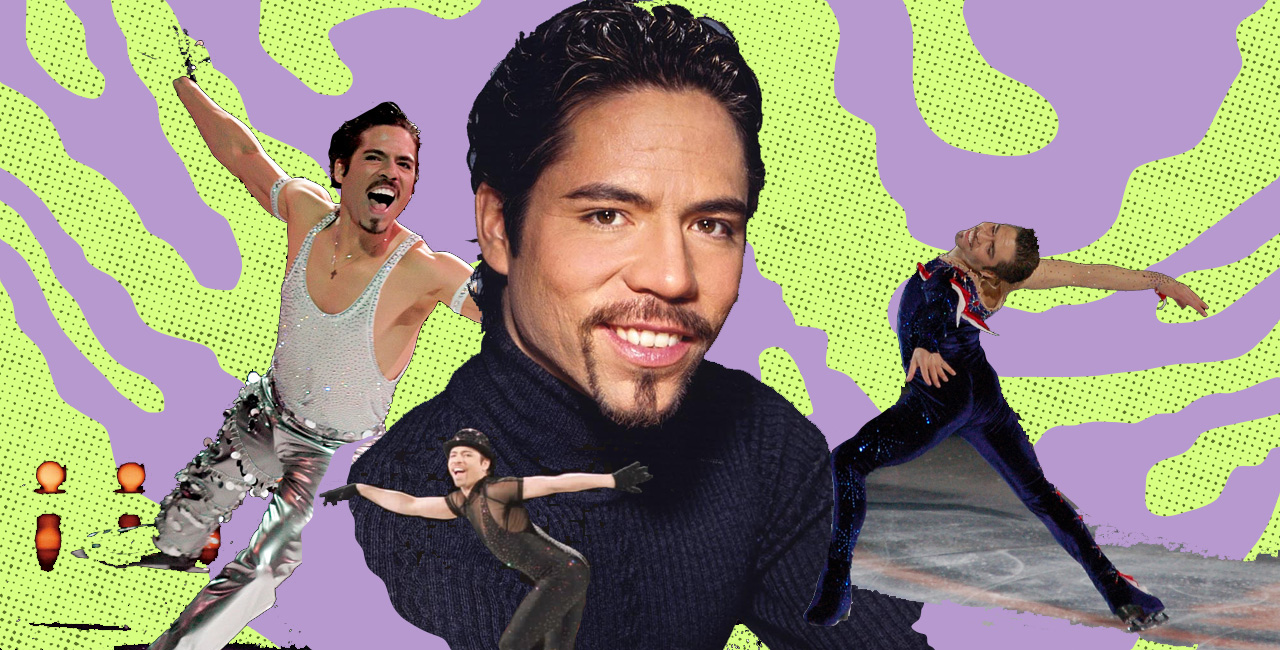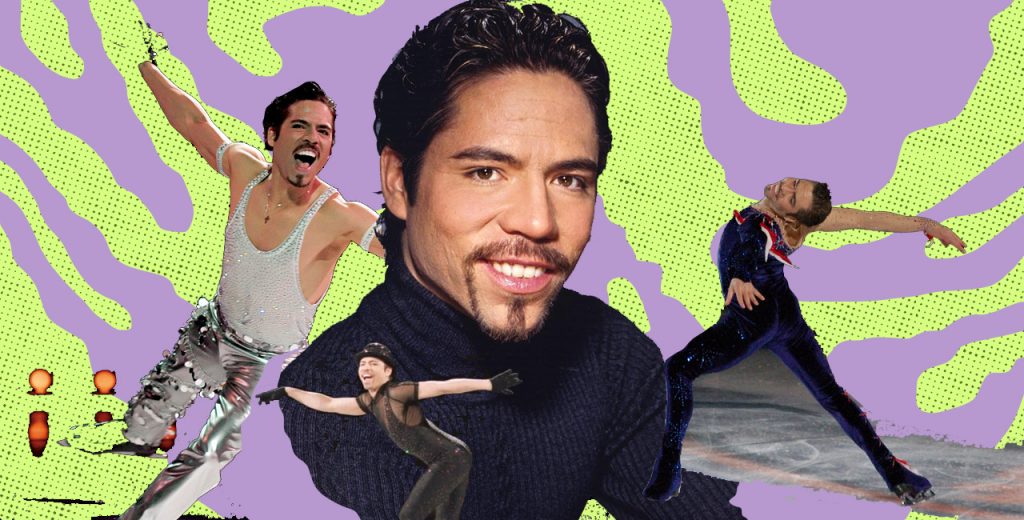If you’ve tuned in to the PyeongChang Olympics, then you may have heard that a record number of LGBTQ athletes are competing this year. A few of them have already medaled in their respective sports. While I’m rooting for everyone black, brown, and queer, I also want to honor the legacy of a living queer icon and pioneer that history has forgotten.
As we discuss Adam Rippon, an openly gay ice skater currently representing Team USA, we can’t forget the achievements of Figure Skating Hall of Famer Rudy Galindo. In 1996, Galindo pulled off one of the greatest upsets in figure skating. He had not only had given up on skating, but the skating world had given up on him when he decided to compete at the US National Championships. He decided to compete because the event took place in his hometown of San Jose, California. With the odds stacked against him, no one in the skating world expected much from him. He himself hoped he could finish in the top five. But by the time the male figure skating portion wrapped, Rudy had given the performance of his life and one of the most memorable skates in history. Oh yeah, Rudy also leapt from irrelevant to the top of the podium with a gold medal around his neck. That feat alone makes Rudy a legend, but because I am one who likes to provide receipts, here are eight reasons he’s a queer Latinx icon.
1
His style
While many of his peers played it safe with their dull (and ugly, if we’re being honest) costumes, Rudy set the ice on fire with his style. Rudy fearlessly stepped into an entire character for a performance. And he gave us looks!
2
He is the first openly gay National Figure Skating Champion
Being celebrated as a gay figure skater is somewhat of a new phenomenon. That certainly was not the case 22 years ago. In his autobiography Icebreaker, Rudy shared that he was oftentimes unmotivated due to the lack of support from fellow skaters, judges, and skating officials. He didn’t fit the “mold” of the all-American figure skating hero.
A few months before winning the 1996 National Championship, Rudy came out as gay. Many thought this was a mistake in a sport that is described as clean cut and all-American. His revelation could have impacted his scores, but Rudy threw caution to the wind and skated his way to the top of the podium, becoming the first out figure National Champion in history. With this win, he also became the first Mexican-American National Champion. NBC News reports that he is the US’ most decorated Latino figure skater.
3
He's all about family
Rudy often credits his family’s support for his success. Even while surviving extreme poverty, his parents sacrifice damn near everything so that he could live out his dream. His sister, Laura, became his coach and dedicated her life to ensure that Rudy became the champion she knew he was.
4
Rudy's the epitome of extra
I literally aspire to be as extra as Rudy. Aside from his amazing outfits, his skating performances are some of the most brilliants pieces of art. Like this performance of “Somewhere Over the Rainbow” when he skated an entire program with a Pride Flag.
Also, check out the outfit change and props during this Brady Bunch-inspired performance.
5
Rudy's an inspiring HIV activist
By the start of 2000, Rudy had become one of the most celebrated and popular performers in the professional figure skating world when he was forced to withdraw from the Goodwill Games due to viral pneumonia. He would later be diagnosed with HIV. After beginning treatment, Rudy decided to share his story in hopes of inspiring others to seek treatment. Just a few months later, Congresswoman Nancy Pelosi – on behalf of the House of Representatives – presented Galindo with a US flag that had recently flown over the Capitol Building and declared Galindo a National Treasure.
6
He not only survives; he thrives.
Before becoming a US champion, Rudy had lost two coaches and his brother George due to complications of HIV. This left him so devastated that he took nearly a year off from skating to mourn. Now, in the skating world, taking a month off can have a devastating impact on your performance in competition. But when Rudy returned, he not only became a champion in the skating world, he became the people’s champion.
7
He defied the odds.
Figure skating is an expensive sport (some estimates put the annual cost at $35,000 to $50,000), and is not easily accessible or welcoming to poor black and brown people. It is not accessible to anyone living on the margins. So when someone like Rudy – a poor, brown and queer man – stepped into that world, they have to be ready to defy the odds. And that is exactly what Rudy did.
8
Rudy's a pioneer
As the world now celebrates the current generation of queer figure skaters, we are grateful for the groundwork laid by Rudy. He competed and existed on his terms. He still does. And we are all better for it.




